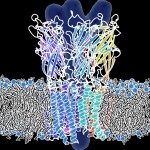Link to Pubmed [PMID] – 30079234
Link to HAL – Click here
Link to DOI – 10.12688/f1000research.14870.1
F1000Res 2018;7
Connecting the dots among the amino acid sequence of a protein, its structure, and its function remains a central theme in molecular biology, as it would have many applications in the treatment of illnesses related to misfolding or protein instability. As a result of high-throughput sequencing methods, biologists currently live in a protein sequence-rich world. However, our knowledge of protein structure based on experimental data remains comparatively limited. As a consequence, protein structure prediction has established itself as a very active field of research to fill in this gap. This field, once thought to be reserved for theoretical biophysicists, is constantly reinventing itself, borrowing ideas informed by an ever-increasing assembly of scientific domains, from biology, chemistry, (statistical) physics, mathematics, computer science, statistics, bioinformatics, and more recently data sciences. We review the recent progress arising from this integration of knowledge, from the development of specific computer architecture to allow for longer timescales in physics-based simulations of protein folding to the recent advances in predicting contacts in proteins based on detection of coevolution using very large data sets of aligned protein sequences.


